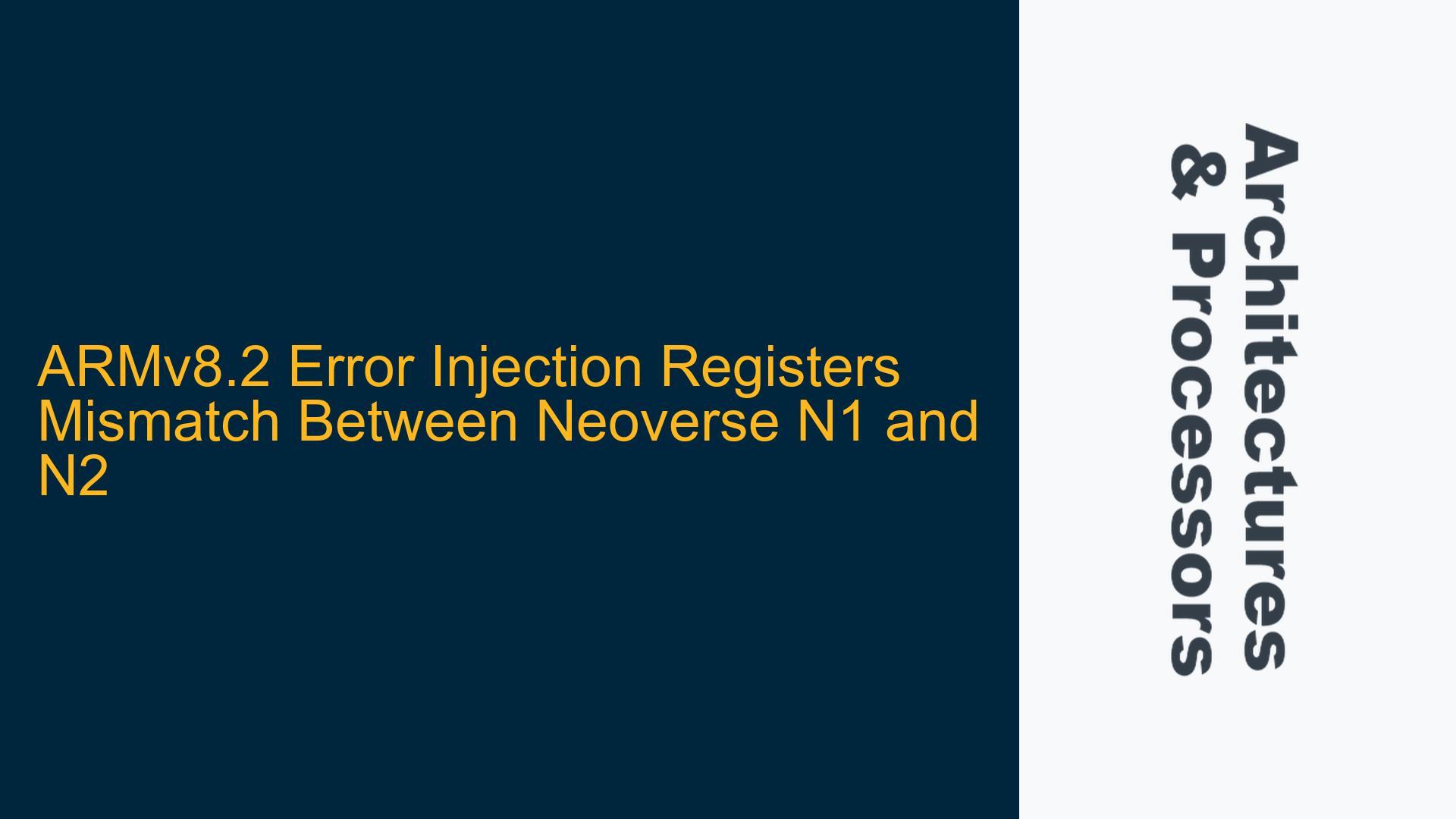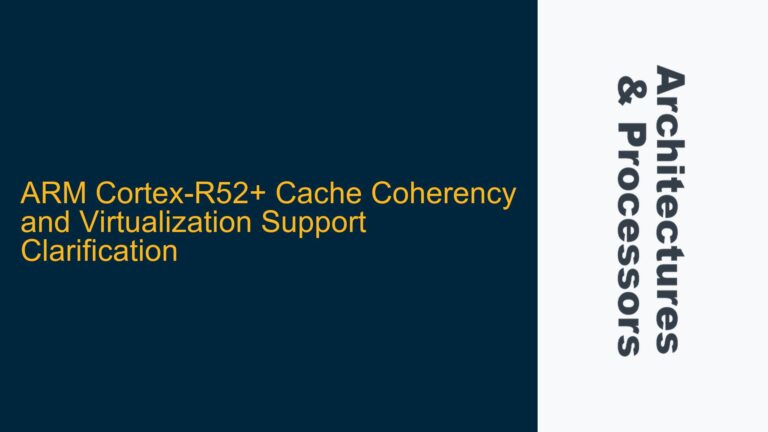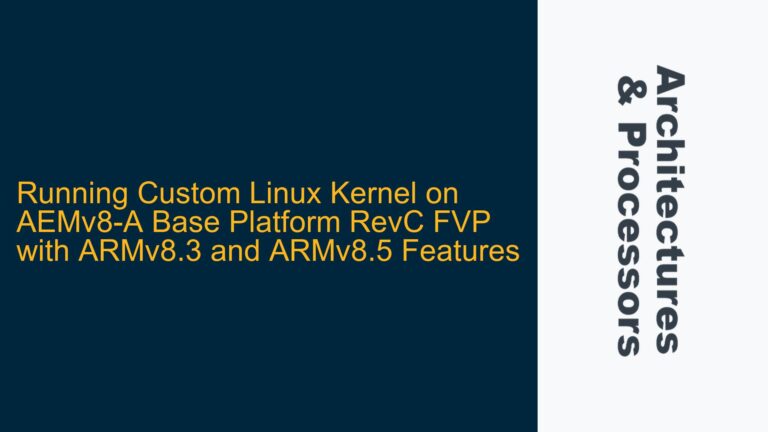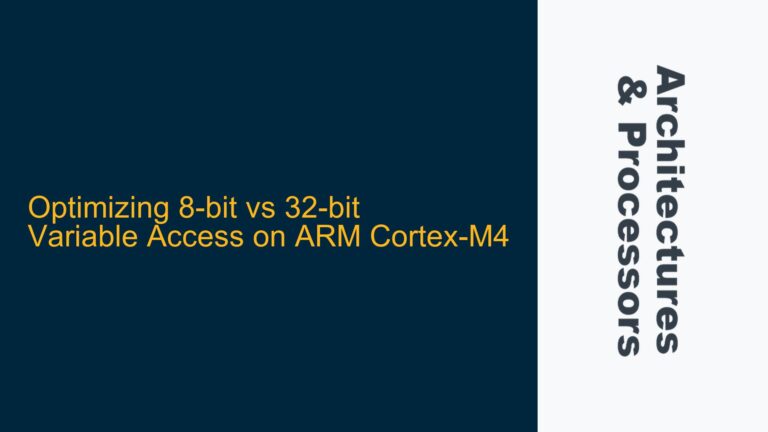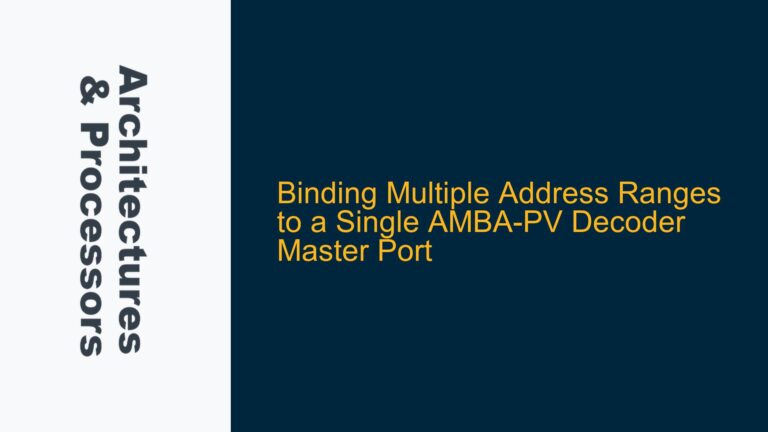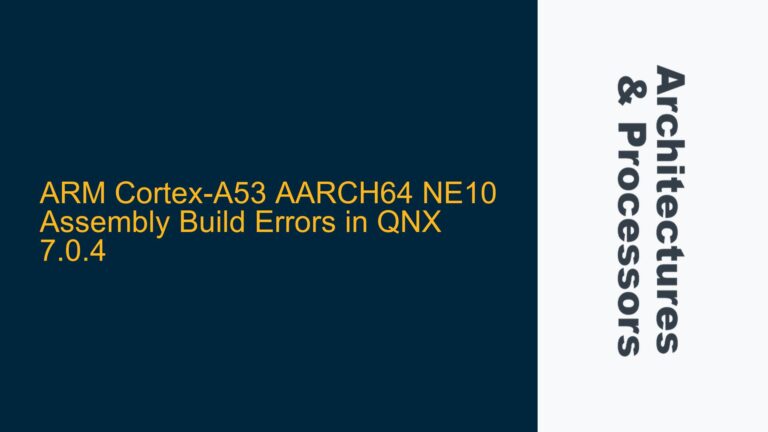ARMv8.2 RAS Extension Error Injection Registers and Their Implementation Differences
The ARMv8.2 architecture introduced the Reliability, Availability, and Serviceability (RAS) extension, which provides mechanisms for error detection, correction, and reporting. One of the key features of the RAS extension is the ability to inject errors for testing purposes. This is facilitated through specific system registers such as ERXPFGF_EL1, ERXPFGCTL_EL1, and ERXPFGCDN_EL1. These registers are crucial for simulating fault conditions and verifying the robustness of the software stack in handling such scenarios.
However, a significant issue arises when these registers are implemented differently across various ARM cores, particularly between the Neoverse N1 and Noverse N2 processors. The ARM Architecture Reference Manual (ARM ARM) defines these registers with specific encoding, but the Technical Reference Manual (TRM) for Neoverse N1 and N2 provides different encodings. For instance, the ERXPFGF_EL1 register is defined as S3_0_C5_C4_4 in the ARM ARM, but the Neoverse N1 TRM defines it as S3_0_C15_C2_0. This discrepancy raises questions about the consistency of register definitions across different ARM cores and the implications for software compatibility.
The primary concern is whether these differences are intentional or if they represent an error in the documentation. Furthermore, the practical implications for software developers are significant, as they need to ensure that their code can run on multiple ARM cores without modification. This issue is particularly relevant for developers working on systems that must support both Neoverse N1 and N2 processors, as the differences in register encoding could lead to software that fails to function correctly on one or both cores.
Neoverse N1 and N2 RAS Register Encoding Differences and Their Causes
The root cause of the discrepancy in the encoding of the RAS error injection registers between Neoverse N1 and N2 lies in the implementation-defined (IMP-DEF) nature of certain aspects of the ARM architecture. The ARM architecture allows for some degree of flexibility in how certain features are implemented, and this flexibility can lead to differences in how registers are encoded across different cores. In the case of the RAS extension, the Neoverse N1 and N2 processors appear to implement different revisions of the RAS specification, leading to differences in the encoding of the error injection registers.
The ERXPFGF_EL1 register, for example, is encoded as S3_0_C15_C2_0 in the Neoverse N1, while it is encoded as S3_0_C5_C4_4 in the Neoverse N2. This difference in encoding is not arbitrary but is likely due to the different RAS revisions implemented by the two cores. The Neoverse N1 may implement an earlier revision of the RAS specification, while the Neoverse N2 implements a more recent revision. This could explain why the register encodings differ between the two cores.
Another possible cause of the discrepancy is the way in which the ARM architecture handles system registers. System registers in ARM are typically accessed using the MRS (Move to Register from System) and MSR (Move to System Register) instructions, which require the register to be specified using a specific encoding. The encoding of a system register is determined by the combination of the op0, op1, CRn, CRm, and op2 fields. In the case of the RAS error injection registers, the op0, op1, CRn, CRm, and op2 fields differ between the Neoverse N1 and N2, leading to different encodings for the same logical register.
The implications of these differences are significant for software developers. If a developer writes code that assumes a specific encoding for a system register, that code may fail when run on a different core that uses a different encoding. This is particularly problematic for developers who need to support multiple ARM cores, as they must account for these differences in their code. The need to handle different register encodings can complicate the development process and increase the risk of errors.
Handling RAS Register Encoding Differences in Software: Strategies and Solutions
To address the issue of differing RAS register encodings between Neoverse N1 and N2, developers must adopt strategies that allow their software to handle these differences gracefully. One effective approach is to use runtime detection of the processor type and adjust the register encodings accordingly. This can be achieved by reading the CPUID register (MIDR_EL1) and checking the PartNum field, which indicates the primary part number of the processor. For example, the PartNum field for the Neoverse N1 core is 0xD0C, while the PartNum field for the Neoverse N2 core may be different.
Once the processor type has been identified, the software can use conditional logic to select the appropriate register encoding. For example, if the processor is identified as a Neoverse N1, the software can use the encoding S3_0_C15_C2_0 for the ERXPFGF_EL1 register. If the processor is identified as a Neoverse N2, the software can use the encoding S3_0_C5_C4_4. This approach allows a single binary image to support multiple processor types without requiring separate builds for each core.
Another strategy is to abstract the register access logic into a separate module or library that handles the differences in register encodings. This module can provide a unified interface for accessing the RAS error injection registers, hiding the details of the underlying register encodings from the rest of the software. This approach can simplify the development process by reducing the need for conditional logic throughout the codebase.
In addition to runtime detection and abstraction, developers should also consider the use of macros or inline functions to handle the differences in register encodings. For example, a macro could be defined that expands to the appropriate register encoding based on the processor type. This approach can reduce the risk of errors by ensuring that the correct encoding is used consistently throughout the code.
Finally, developers should be aware of the potential for future changes in the RAS specification and the impact these changes may have on register encodings. By designing their software to be flexible and adaptable, developers can reduce the risk of compatibility issues when new processor cores are introduced. This may involve using versioned interfaces for accessing system registers or providing mechanisms for updating the register access logic without requiring changes to the rest of the software.
In conclusion, the differences in RAS register encodings between Neoverse N1 and N2 processors present a challenge for software developers, but this challenge can be overcome with careful design and implementation. By using runtime detection, abstraction, and other strategies, developers can create software that is compatible with multiple ARM cores and capable of handling the differences in register encodings. This approach not only ensures compatibility but also enhances the robustness and maintainability of the software.
